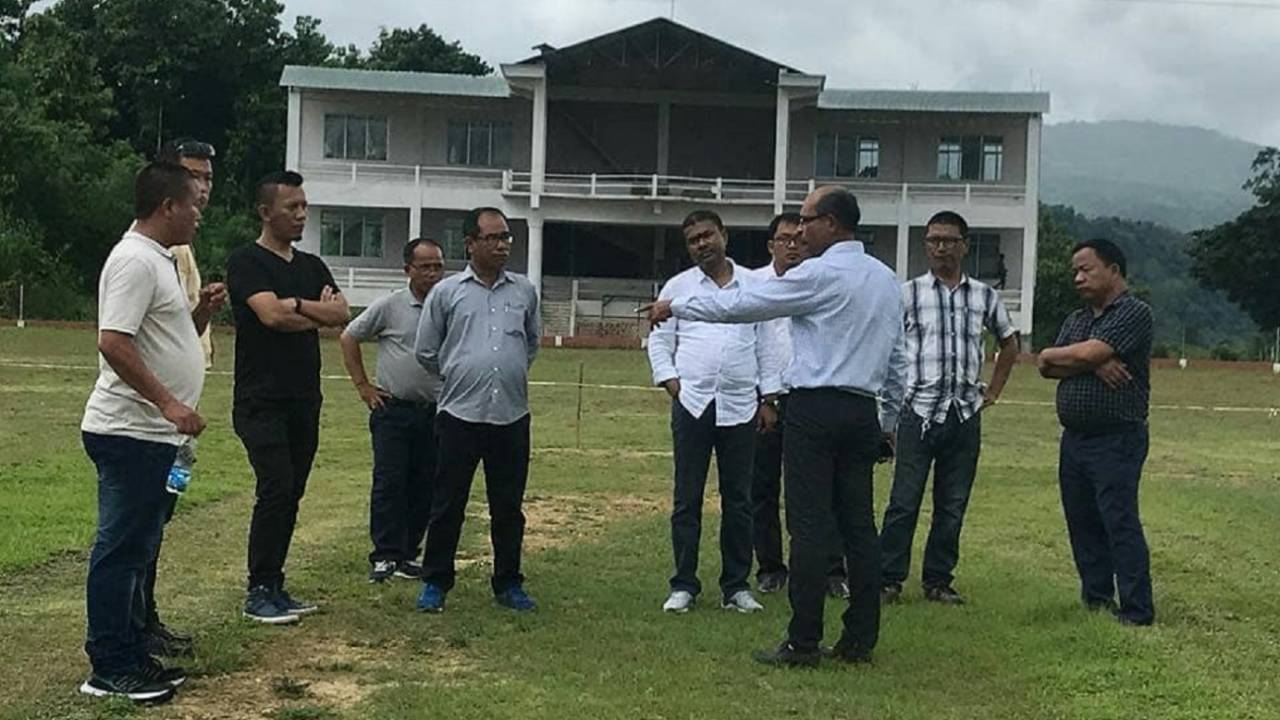With a little over a month to go for the 2018-19 domestic season, the six North-East states that are set to feature
for the first time - Arunachal Pradesh, Manipur, Meghalaya, Mizoram, Nagaland and Sikkim - are struggling with a severe cash crunch to set up infrastructure and manage the running of teams.
Officials have described the sudden integration of these states - which don't have too much exposure to organised cricket - into the Ranji Trophy as a "bombshell", and are working with limited resources to bring their teams up to speed.
With the BCCI yet to fully impletemt the Lodha Committee's recommendations, and the final Supreme Court order still awaited, the six new teams are not eligible to receive direct annual grants from the BCCI. As an interim measure, the board has, in principle, agreed to bear the six teams' expenses for the season once they receive and approve a working budget.
"Once the court ruling is in order and we adopt the new constitution, we will be granted full membership and be eligible for the annual grant and vote, so it's a waiting game till then," Naba Bhattacharjee, the convernor of the North East task force set up by the BCCI, tells ESPNcricinfo. "This isn't to say cricket won't go on till we get money, but developing new infrastructure and a world-class set-up can only happen once the funds come in, and that will take time."
Among the common worries of the six states apart from the acute shortage of funds is the lack of existing infrastructure. In a season that will feature over 2000 matches and 23 tournaments across the men's and women's categories, the new teams are also in a race to conduct pre-season camps and hire support staff apart from lining up professional curators and groundstaff.
"None of our boys have played on turf pitches. How can you expect returns when there has been no investment?" asks Lonzang Tenzing, president of the Sikkim Cricket Association. "Our players are only used to playing on matting wickets, and there is a huge difference.
"Suddenly with so many tournaments, where will we run for funds? This is like a bombshell to us but we are trying our best. We've somehow managed to conduct trials, but at the moment, the gap between where we are and where we should be is steep."
The only payment each of the six associations has received has been a meagre INR 50 lakh in 2012-13. In comparison, some of the bigger teams like Karnataka, Maharashtra and Mumbai have received payments in excess of INR 200 crore.
Most of the six teams have had to rely on multi-purpose grounds with modest facilities to train on and are exploring the possibility of looking elsewhere for home games. Sikkim doesn't even have a dedicated cricket ground and the team is exploring the possibility of playing in Siliguri in neighbouring West Bengal, while Mizoram are likely to play the first part of the season in Silchar (Assam). Arunchal, who also don't have a venue of their own, could play their games in Odisha.
"We hope to host our matches in Aizawl (the capital of Mizoram) in the second half of the season, but the first half looks doubtful," says Mamon Majumdar, secretary of the Cricket Association of Mizoram. "The taskforce set up by the board is helping, but you can't fight weather. There's been a lot of rain, so we have to develop pitches and outfields from scratch. With limited resources, we can't set up everything when there is no money coming in. We've clearly stated to the board that it's up to them to deal with vendors and other people."
Lack of infrastructure has also had a direct impact on the cricket, with the teams far from identifying their squads. Funding and infrastructure aside, the teams are also severely hampered by the absence of trained curators and groundstaff.
The associations cite lack of funds to hire staff and are at the mercy of the board for payments. ESPNcricinfo understands that the board is likely to appoint and bear the costs of qualified support staff for the men's, women's, Under-19 and Under-16 sides of the six states.
"Even now, our fight isn't fully over. This has been going on for years, but we aren't full members yet, so there is a dependency on everything, Tenzing says. "We have requested the BCCI to provide funds to conduct our month-long camps, so that we can get coaches on board. Only then can we look at selecting our full squad, and have them play in a few preparatory games."
The cash crunch has also affected the composition of sides, in that they are looking at the possibility of featuring just home-grown players by default, which Tenzing feels isn't necessarily a bad thing. However, a number of outstation professionals looking for teams are jittery about playing for sides that don't have the necessary infrastructure.
Lack of funding means the six states may not have the means to pay the professionals their contractual fee. As things stand, it's the prerogative of the association to pay the professional fee to their outstation players, while the match fee component is paid directly by the board.
"We don't have money to have an office and stationery, where do we pay professionals?" Tenzing asks. "We don't have an option because of money, but this is a battle we've been fighting with the board for recognition for many years, so we now want to promote local talent too. It may not be a bad thing because at least we will learn even if we lose badly."
Shashank Kishore is a senior sub-editor at ESPNcricinfo
